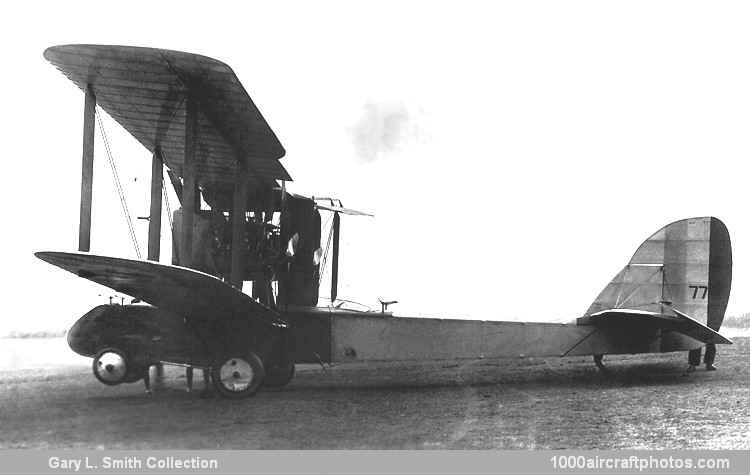Construction was of wood with mainly fabric covering, and the front half of the fuselage was covered with stressed plywood. Accommodation was for three crew in open cockpits, the pilot just forward of the leading edge of the wing, with a gunner in the nose and a second gunner well behind the line of the propellers. Each gunner was armed with a Lewis gun and had basic flight controls in case of emergency.
The prototype was modified to the D.H.3A with the installation of more powerful Beardmore engines of 160 hp driving four-blade propellers. To avoid the use of extension shafts, cut-outs were made in the wing trailing edges and the rudder area was increased.
The testing squadron at Upavon recommended the adoption of the D.H.3A as it had sufficient endurance to bomb the industrial centers of the Rhine in Germany from bases in Northern France. The bomb load was carried externally under the wings.
Work commenced on an initial batch of 50, but when the first machine was almost finished the D.H.3 was cancelled in favour of smaller bombers. The completed aircraft were stored at Hendon behind the Airco sheds until burnt in 1917."
